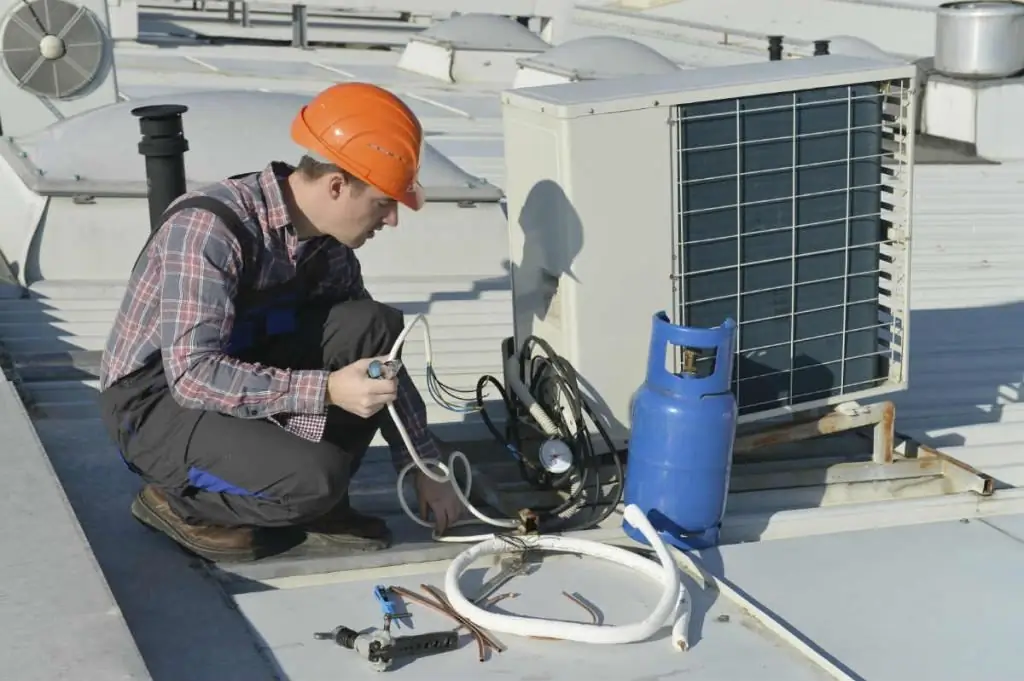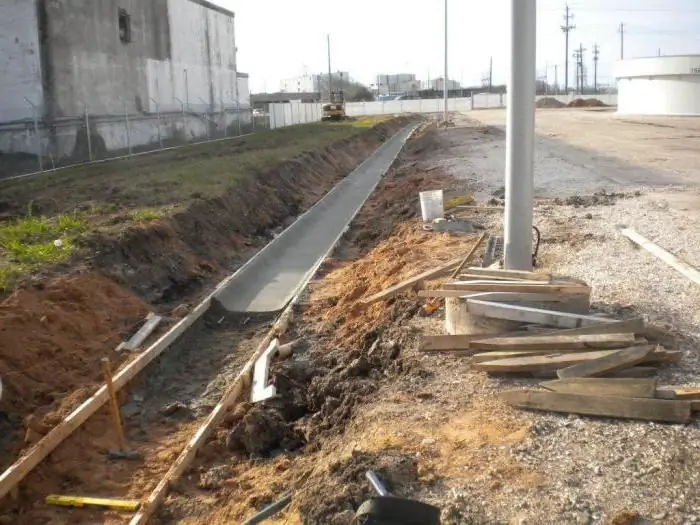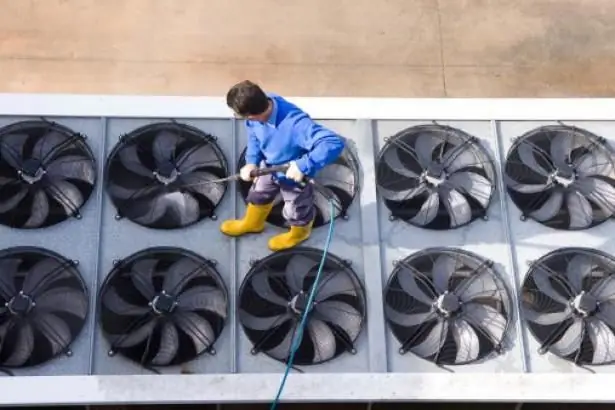2026 Author: Howard Calhoun | [email protected]. Last modified: 2025-06-01 07:12:56
For the normal existence and life of a person, it is necessary to create and maintain certain parameters of the environment, including air. Changes in temperature, the accumulation of harmful impurities in it significantly affect the well-being of people and their he alth. To maintain the desired characteristics of indoor air, special equipment is used.
Air Requirements
Heating, ventilation and air conditioning perform the function of maintaining comfortable and safe indicators of temperature, humidity and concentration of harmful emissions for humans.

According to sanitary and hygienic standards, the following characteristics of the air environment are considered favorable for human stay:
- temperature from 18 to 22 °C, fluctuations are allowed in summer within 20-28 °C, and in winter and transition - up to 22 °C;
- relative humidity of 30-60% is considered acceptable, in the cold period the upper limit is reduced to 45%.
For the destruction of the gaseous shell around a person, air movement is also important. With a maintained room temperature of about 20-25 ° C, it is recommended to adhere to an air velocity value of 0.2-0.3 m/s; during heavy work, this parameter can reach 0.6 m/s. For different directions and rooms, different ventilation and air conditioning systems are used. SNiP and other relevant regulatory documents describe the necessary parameters and arrangement of systems in each case.
Types of ventilation systems
There is a certain division of the types of systems for maintaining the microclimate in the room. Air conditioning and ventilation can be carried out by several types of equipment, depending on the purposes and means used:
- according to the method of setting air in motion, they are divided into gravitational (natural) and mechanically driven (artificial) systems;
- depending on the purpose - for supply, mixed and exhaust;
- ventilation systems can be both general exchange and local (zonal);
- by execution they are divided into channel and non-channel.
Gravity systems do not use fans or other mechanical means, and the movement of air is achieved by the pressure difference of the air column.

Local ventilation is used to supply air tocertain zones and taking it from there. Most often, these are places where pollution occurs with technological or other emissions. The local ventilation of the exhaust type also includes an umbrella over the stove. Heating, ventilation and air conditioning can be performed as separate systems or as one piece of equipment.
Types of indoor climate systems
Air conditioning is carried out to maintain the desired environmental parameters in enclosed spaces. Sometimes only cooling is mistakenly called this concept.

The gradation of air conditioning systems is extensive, but the main difference is in what the necessary air parameters are maintained for. In this case, they are divided into two large classes:
- comfortable - the characteristics of the air environment are created and maintained for people to stay indoors;
- technological, the main purpose of which is to ensure the temperature, speed of movement and air humidity necessary for the operation of equipment or production.
Comfortable air conditioning and ventilation are used in residential, retail, office and public spaces. For this, household, semi-industrial and industrial air conditioners are used.
Heating air
Heating - space heating to return the heat lost during the cold period through external fences to maintain a comfortable temperature and ensure production technology. Different types of heaters are used for different purposes.devices and systems. It can be steam, water, infrared, electric and air heating.

Air conditioning and ventilation are often combined with heating in one system. An example of this is air, in which air is collected by mechanical systems, heated and distributed back. This design can also be equipped with coolers and fresh air admixture. In housing, water, steam, electric and infrared systems are most often used.
Industrial ventilation and air conditioning
Technological industrial ventilation and air conditioning are used to create the parameters necessary for production. They mainly use high-powered equipment designed to process large volumes of air. This is true for workshops, production lines, workshops, where environmental parameters are of fundamental importance for the quality of products.
This class also includes:
- suction systems in the woodworking industry;
- supply and exhaust systems of clean rooms (electronic, pharmaceutical and other industries).
Sometimes industrial air conditioning and ventilation systems include systems installed in large rooms, supermarkets and shopping centers, although in these cases they are used mainly for human comfort.
Installation Requirements
The basis for the correct operation of all engineering systemsAssurance of buildings, in addition to the quality of equipment, is also professional installation and commissioning. This largely depends on the skills and education of the technical staff. The installer of HVAC systems and heating systems must have knowledge of the nuances of operation, equipment capabilities and safety regulations.

Regardless of the class of premises and their purpose, the organization of a microclimate system begins with the development of a project. In it, specialists must calculate all the parameters of the equipment, the number and types of components, the stages of installation. After that, it becomes possible to calculate the cost of the project and start work on installing the system.
The further operation of ventilation, heating and air conditioning systems without unforeseen situations depends on the coordinated work of specialists at all stages of production.
Recommended:
Air conditioning system maintenance: choosing a company, concluding a contract, rules for registration, act of work performed, maintenance instructions, regulations and safe work

The main task of the ventilation system is to provide access and exhaust air, as well as its filtration and temperature control. In order for these tasks to be fully completed, it is necessary to install special equipment, as well as equip the blower system. Maintenance of the air conditioning and ventilation system is mandatory for both civil and industrial facilities
Tray for heating mains: dimensions, GOST. Reinforced concrete trays for heating mains

Reinforced Concrete Heating Tray is rectangular in shape and has a gutter configuration. The parameters for the type of width, length and height of different models differ from each other. The structures are made of heavy concrete, which, after hardening, are extremely resistant to various types of loads. In addition, these trays are frost-resistant
Greenhouse heating: heating methods

In spring and summer, thanks to the natural conditions in the greenhouse, you can grow different crops without additional heat. And in autumn, winter and early spring, when both the soil and the air are cold, it is very difficult to grow something in a greenhouse. This is why greenhouse heating is necessary
Heating oil as an alternative to traditional heating

Heating oil has become the most demanded resource for heat production. It is not advisable to use gas and electricity as space heating and water. Moreover, when burned, heating oil releases much more energy than diesel fuel, making it the most suitable energy source for home heating
Maintenance of ventilation and air conditioning systems

Maintenance of ventilation and air conditioning systems is carried out by persons and organizations that have a special license. This activity requires certain knowledge and skills

